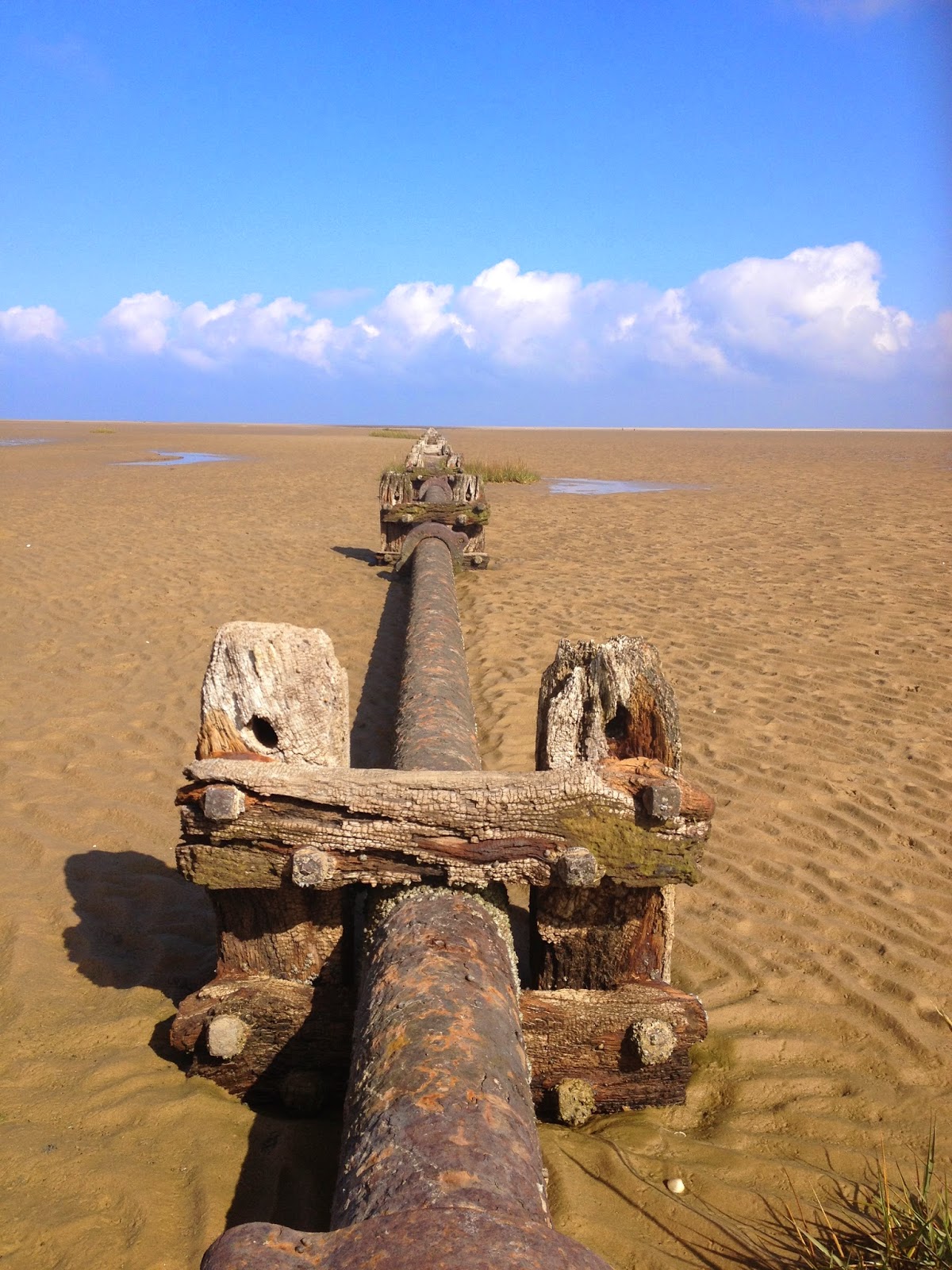 A weekend camping on the North Norfolk coast at Stiffkey gave us the opportunity to explore the saltmarsh that lies between the coastal chalk ridge and the sea.
A weekend camping on the North Norfolk coast at Stiffkey gave us the opportunity to explore the saltmarsh that lies between the coastal chalk ridge and the sea.As we left the campsite with its late low-flying swallows behind, we came first across the marsh, a massive expanse of vegetated mud cut through with rivulets and creeks, which fill and empty with the tides. This habitat stretches for half a mile or so towards the sea, not quite dry land, not yet beach proper, a liminal zone yet a fully formed ecosystem in its own right.
Some of the creeks are wide enough to merit bridging, and at high tide navigable by boat; boats that at low tide remain marooned in the middle of the landscape as if picked up and abandoned by a petulant giant-child.
 Although it seems a bleak landscape, closer inspection shows that it is thrumming with life. The waterways are living capillaries that abound with crabs, shrimps and tiny fish that scatter and shoot as soon as our step is felt. Wormcasts and shells are ample evidence of the huge seafood platter that provides sustenance for the myriad waders and gulls that flit idly across the landscape or pick away at the mud. These assorted birds provide the notable feature of the soundscape, their wailing ululations rising occasionally to piercing banshee wails.
Although it seems a bleak landscape, closer inspection shows that it is thrumming with life. The waterways are living capillaries that abound with crabs, shrimps and tiny fish that scatter and shoot as soon as our step is felt. Wormcasts and shells are ample evidence of the huge seafood platter that provides sustenance for the myriad waders and gulls that flit idly across the landscape or pick away at the mud. These assorted birds provide the notable feature of the soundscape, their wailing ululations rising occasionally to piercing banshee wails.As we tried to work a way around one of the waterways, a couple of other walkers arrive, one of whom turned out to be my erstwhile maths teacher. A brief conversation ensued, covering 25 years of biography, the changing face of North Norfolk, the joys of retirement, the balance between singing and dancing prowess in West Side Story and local chamber music. Strange how we can extemporise a polite drawing room in a wild backdrop.
 A goodbye, a parting and we move on beyond the marsh proper over the lowest of dunes to the even bleaker sandflats beyond. At this point the pipleline that runs across the marsh stands out as the main feature of this alien landscape beyond which lies nothing but north sea and the end of Blakeney Point before the arctic ice. On a sunny late summer day it feels like a benign wilderness in which to wander; what could go wrong? But as the long-stretching sky reflects in the wet sand and the absence of landmarks to anchor yourself starts to take effect, one can easily imagine becoming turned round, unsure whether one is heading back to land and safety, or out to sea-borne danger. Throw in some gloom, or even some autumnal mist with a rising tide, and this could be a lethal beauty.
A goodbye, a parting and we move on beyond the marsh proper over the lowest of dunes to the even bleaker sandflats beyond. At this point the pipleline that runs across the marsh stands out as the main feature of this alien landscape beyond which lies nothing but north sea and the end of Blakeney Point before the arctic ice. On a sunny late summer day it feels like a benign wilderness in which to wander; what could go wrong? But as the long-stretching sky reflects in the wet sand and the absence of landmarks to anchor yourself starts to take effect, one can easily imagine becoming turned round, unsure whether one is heading back to land and safety, or out to sea-borne danger. Throw in some gloom, or even some autumnal mist with a rising tide, and this could be a lethal beauty. And so we turn, back to the marginally firmer land of the marsh. Back across the creeks and crannies, the muted purples of the sea lavender amongst the green hues of salt-marsh grasses, pausing only to note the colourful washes in certain pools, and a bleached skeleton crab, whilst the redshank yells its outrage at a bullying gull. And then we are glad to be back; back to the land, back to the reassurance of chalk underfoot, back to our certainties.
And so we turn, back to the marginally firmer land of the marsh. Back across the creeks and crannies, the muted purples of the sea lavender amongst the green hues of salt-marsh grasses, pausing only to note the colourful washes in certain pools, and a bleached skeleton crab, whilst the redshank yells its outrage at a bullying gull. And then we are glad to be back; back to the land, back to the reassurance of chalk underfoot, back to our certainties.

No comments:
Post a Comment